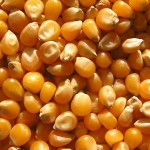by Catherine Haug, May 11, 2013
There are many troubling problems with our current ag system; most center around the use of chemicals to fertilize the soil and protect the fields (GMO or otherwise) from pests and weeds. Some of those chemicals are poisoning not only our bees but also birds, rodents, game animals, livestock, and even humans. Much of commercial ag is shipped long distances to warehouses for storage for many months, and then shipped again to retail outlets or processing plants, so that by the time it reaches the consumer it is what I would call ‘dead’ food, even harmful food-like stuff.
On the other hand , a ‘shop local’ movement is gaining ground, encouraging small family farmers to grow using organic methods, and to sell locally. While a large faction of science supports new-tech methods (GMOs, chemicals, etc.), the Union of Concerned Scientists sees a different vision, as introduced in the article: The Healthy Farm: A Vision for U.S. Agriculture. From the article:
“U.S. agriculture is at a crossroads. The path we’ve been on, industrial food production, is a dead end. It damages air, water and soil, harms rural communities, and limits future productivity.
But there’s a better way. Scientists call it agroecological farming. We call it healthy farms. Healthy farms can be just as productive as industrial farms, but they’re better for the environment, the economy, and the people who grow (and eat) food.” (4)
Article Synopsis
The article offers discussion of the following, as essential components of strong, vital, small & local family farms, which are essential components of the 2013 Farm Bill: Local Farms, Food and Jobs Act:
- 3 Healthy Farm Principles: “Productivity, Economic viability, and Environmental stewardship;”
- 4 qualities that characterize the healthy farm: “Multifunctional, Regenerative, Bio-diverse, and Interconnected.“
- 4 Healthy Farm Practices: “A landscape approach, Crop diversity and rotation, Integrating crops and livestock, and Cover crops.”
- 4 Healthy Farm Benefits: “Reduced need for chemical inputs, Drought resilience, Increased biodiversity, Reduced environmental impact.”
- 3 Ways of Helping Healthy Farms Prosper: “Offer greater financial incentives, Expand outreach and technical assistance, and Increase publicly funded research.
If you are inspired by this vision and wish to lend your support, you can take action on their Action page: Tell Congress: We Need Healthy Food and Farms!



